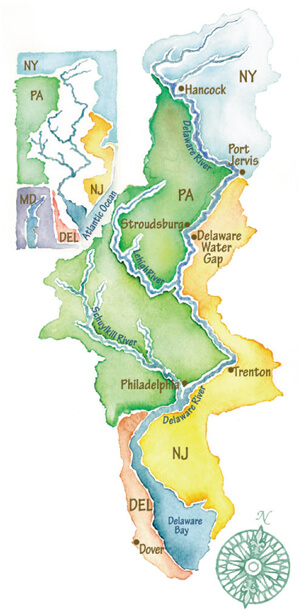Tracking Pollution in the Delaware Basin: Tools for Community Action
Elevate your community engagement by identifying common sources of pollution and equipping volunteers with guidance for how to spot them and take action! We developed tools to help you track these common sources of pollution in the Delaware River Basin:
Click the buttons below to find issue-specific steps you can take to collect data on water quality issues relevant to your community.
Community members are the eyes and ears of your watershed. Providing them with resources, tools, and tips for when they do encounter issues can help to stop the problem in its tracks, bring new issues to light, and ensure permits and policies are being implemented properly.
In the Delaware River Basin, waterways may be impacted by Combined Sewer Outfalls (CSOs) discharging untreated wastewater directly into rivers; elevated chloride levels due to excessive salt piles left over from a winter storm; and sedimentation and erosion impacts from flooding and improperly managed construction sites. Pollution events in your community can cause harmful impacts to nearby streams and rivers, resulting in impaired water quality unsuitable for recreation and risks to aquatic life.
To achieve the Clean Water Act‘s goal that all waters should be, at the very least, fishable and swimmable, the public has a very important role in highlighting when their waterways are experiencing unregulated or unchecked pollution events. River Network has compiled some of the most common issues facing the urban and suburban watersheds of the Delaware River along with templates and resources for creating volunteer action programs to best equip your community members when these issues arise.
Watch the webinar below, recorded on January 31, 2023, for an overview of the tools and to learn how the network is taking action.





